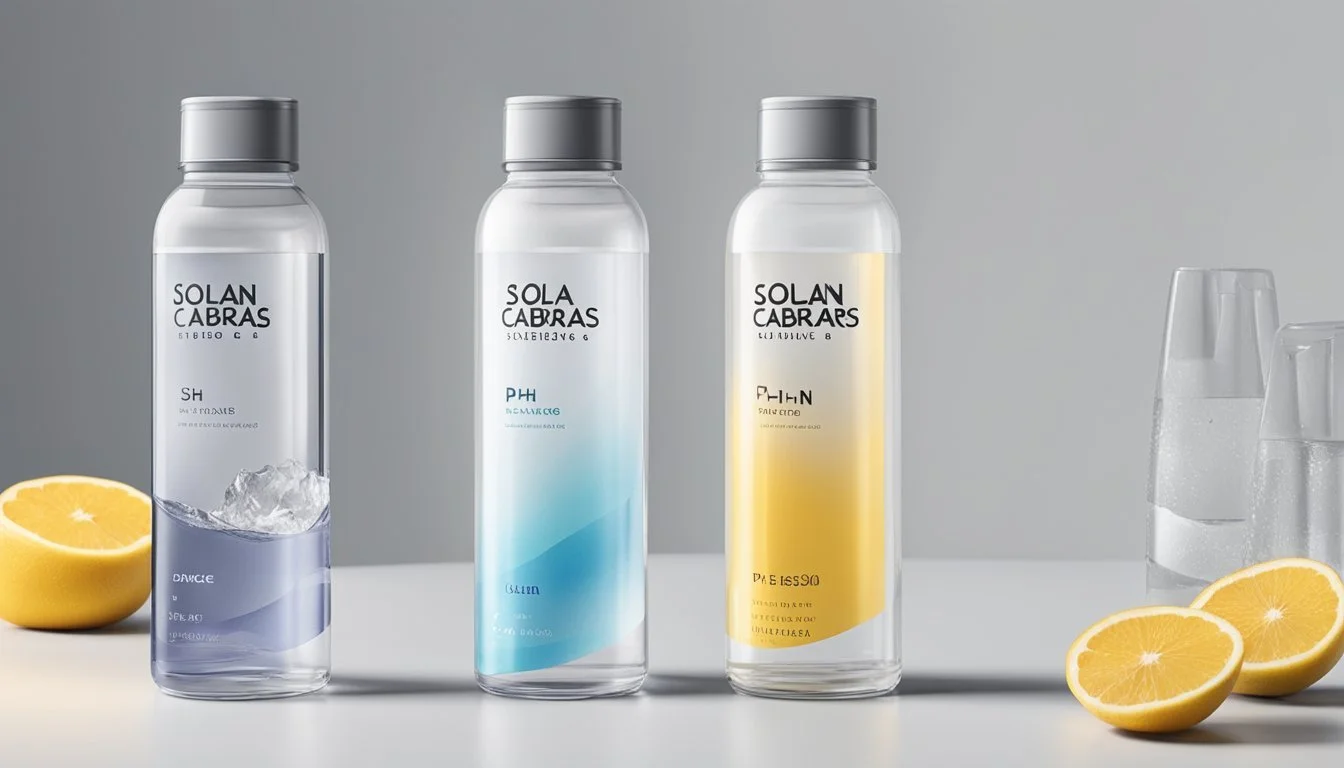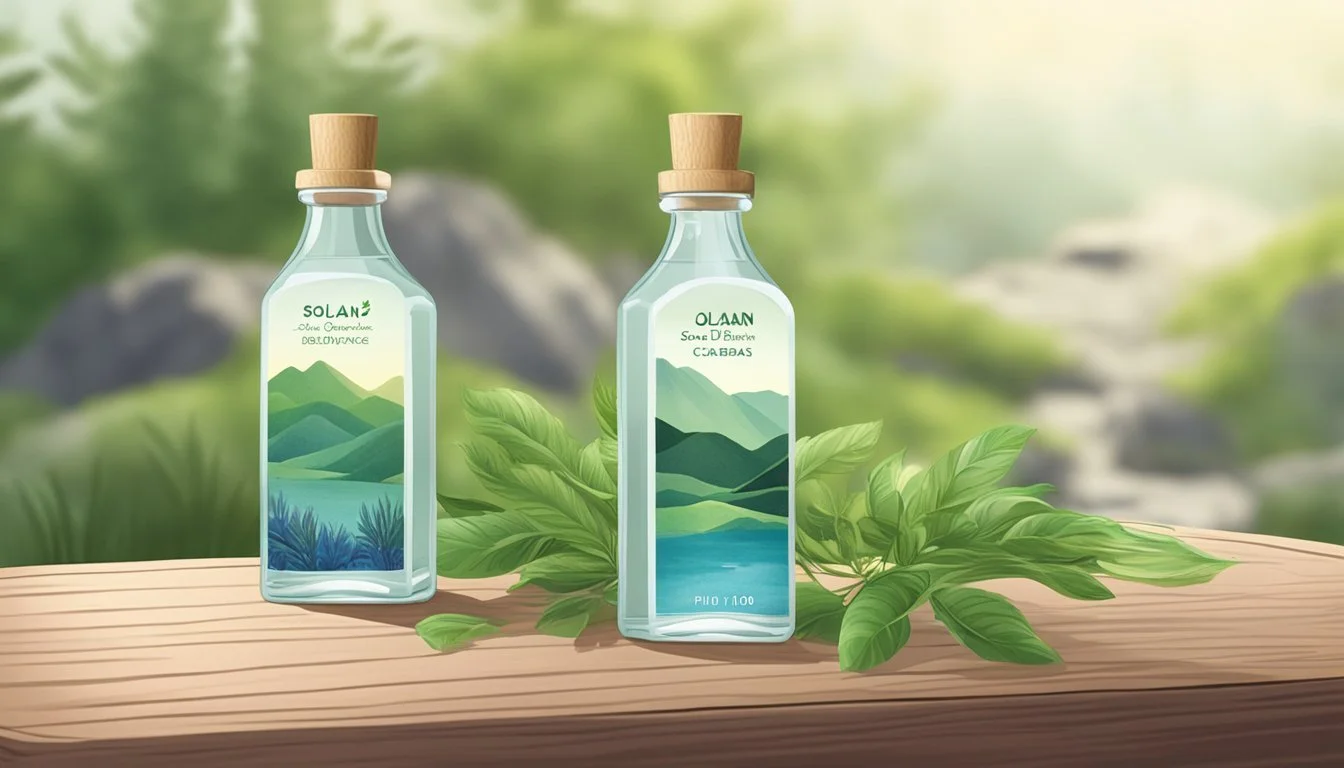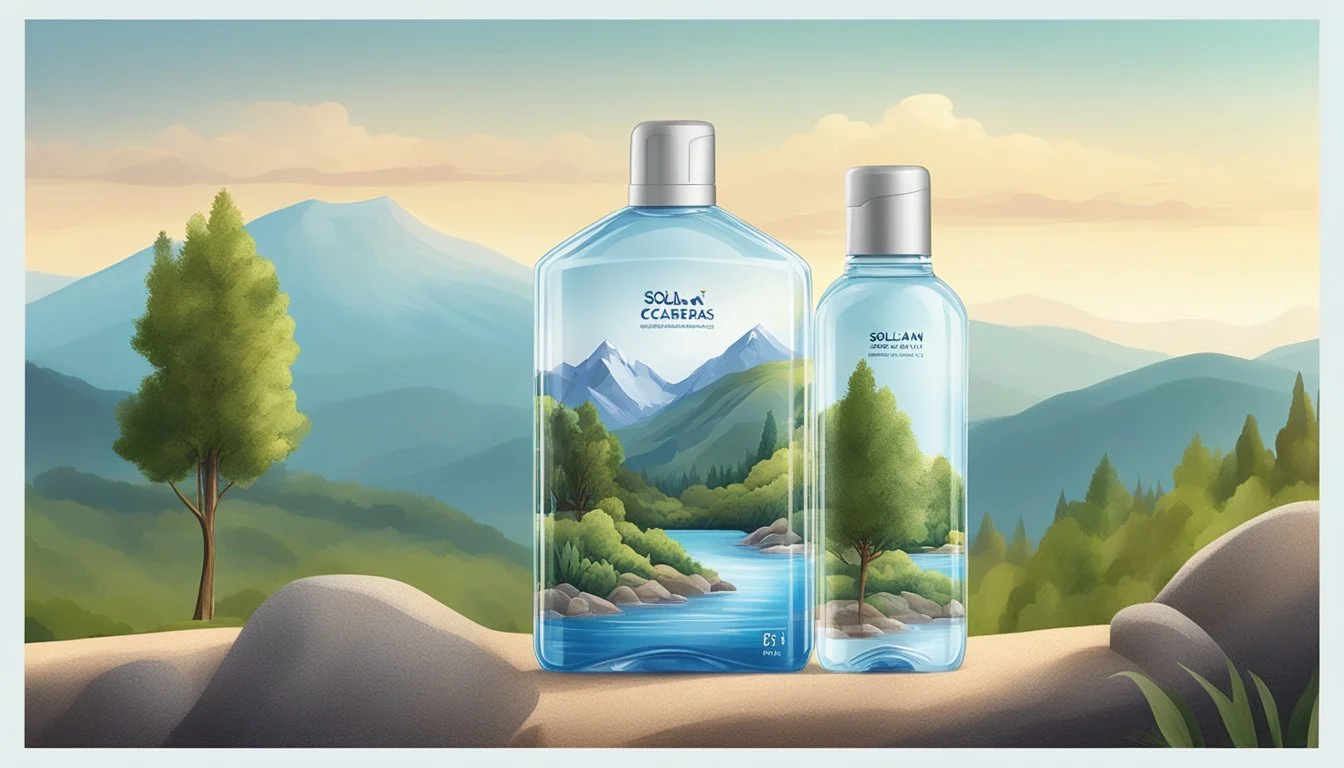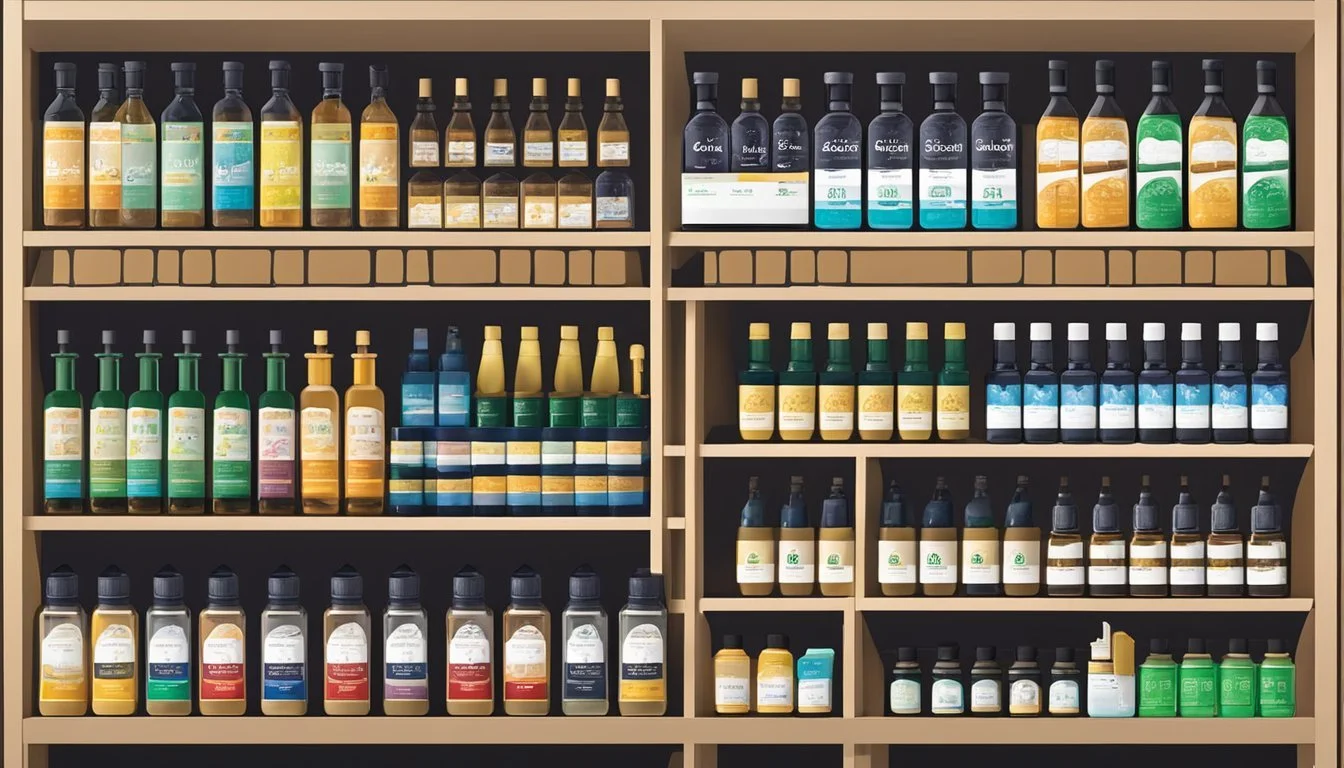Solán de Cabras vs. Essence pH10
Comparing Premium Bottled Waters
Choosing between Solán de Cabras and Essence pH10 in the crowded bottled water market can be challenging for those who prioritize quality and taste. Both brands offer unique qualities, from their source minerals to their pH levels, appealing to different tastes and hydration needs. When considering overall hydration benefits and taste profile, Solán de Cabras often stands out due to its balanced mineral content and smooth, refreshing taste.
Essence pH10, on the other hand, distinguishes itself with its high pH level, catering to consumers looking for slightly alkaline water to potentially balance body acidity. This makes Essence pH10 a great option for health-conscious individuals focused on maintaining a specific pH balance. Evaluating these aspects can help determine which bottle best aligns with individual preferences.
Given the environmental and health considerations in selecting bottled water, readers are encouraged to weigh these factors carefully. Both brands promise a premium experience, but the decision ultimately lies in personal taste and health priorities.
Overview of Bottled Water Industry
The bottled water industry stands as a significant segment of the global food and beverage market. Given its importance, understanding its evolution and modern landscape provides insight into its role in daily life and economic impact.
Evolution of Bottled Water
Bottled water has a long history, with roots tracing back to the 18th century. Originally, bottling was a method to supply mineral water believed to have medicinal properties. Early adopters included spas and health resorts.
In the 1970s, bottled water gained popularity as a convenient and safe alternative to tap water. The increased global travel and heightened awareness of water contamination issues fueled demand.
Over the decades, the industry has innovated with different packaging methods and water sources. Bottled water brands began to appear in grocery stores, drugstores, liquor stores, and convenience stores, making it a staple consumer product.
Modern Bottled Water Landscape
Today, bottled water is one of the fastest-growing industries, with global sales from over 100 countries significantly rising. It holds a multibillion-dollar market, driven by consumer preferences for health and wellness.
Various types of bottled water, such as alkaline, electrolyte-rich, and nutrient-fortified, cater to specific needs. Health-conscious consumers and professionals favor such products for their perceived benefits.
The distribution channels have expanded, with bottled water available widely in grocery and convenience stores. Major brands are constantly innovating with sustainable packaging and different water purification technologies to stay competitive.
Brands like Antipodes5 and Solán de Cabras are renowned for their pristine sources and unique mineral profiles, enhancing the appeal of bottled water in the premium segment.
Comparing Solán de Cabras and Essence pH10
Solán de Cabras and Essence pH10 offer unique water experiences with distinct histories and selling points, appealing to different bottled water enthusiasts.
Brand Histories and Philosophies
Solán de Cabras dates back over 3,600 years, originating in Spain's Serranía de Cuenca. Known for its continuous emphasis on purity and authenticity, it prioritizes a natural, untouched water source. This brand focuses on offering a soft, neutral flavor profile catering to a refined palate.
Essence pH10, on the other hand, positions itself as an alkaline water brand with a higher pH level, promoting balance and wellness. It markets itself as a daily hydration solution that contributes to maintaining the body's pH balance. The brand emphasizes innovation in water processing to enhance its alkalinity.
Unique Selling Propositions
Solán de Cabras:
Source Origin: Natural springs of Serranía de Cuenca, Spain.
Flavor: Soft, neutral taste.
Philosophy: Emphasis on purity and authenticity.
Market: Targets consumers looking for a refined and traditional water experience.
Essence pH10:
pH Level: High alkaline level.
Health Claim: Marketed for daily hydration and pH balance support.
Packaging: Practical plastic bottles designed for everyday use.
Market: Appeals to health-conscious individuals seeking functional and scientifically enhanced hydration.
Both brands cater to distinctive consumer preferences, offering premium bottled water options that stand out due to their unique characteristics.
Water Quality and Composition
When comparing Solán de Cabras and Essence pH10, it is crucial to examine the source, mineral content, and pH level of each water brand. These factors greatly influence their quality and health benefits.
Source and Origin
Solán de Cabras is sourced from a natural spring in the Serranía de Cuenca mountains in Spain. This unique location, with its millennia-old history, ensures a pristine and uncontaminated source of water.
Essence pH10 is obtained from artesian wells, providing a highly alkaline water due to its geological surroundings. The artesian aquifers are known for maintaining natural mineral balances and purity due to minimal exposure to pollutants.
Mineral Content Analysis
The mineral composition of water contributes to its taste and potential health benefits.
Solán de Cabras is rich in minerals such as calcium, magnesium, and bicarbonate, making it a balanced option for daily hydration. The specific mineral content includes:
Calcium: ~4 mg/L
Magnesium: ~2 mg/L
Bicarbonate: ~200 mg/L
Essence pH10, due to its alkaline nature, contains higher levels of various minerals, notably:
Sodium: 2 mg/L
Potassium: 1 mg/L
Silica: 10 mg/L
pH Level Comparison
The pH level of water affects its alkalinity and potential health benefits.
Solán de Cabras has a natural pH level of around 7.4, making it slightly alkaline but still within the neutral range. This pH level supports gentle hydration and is suitable for daily consumption.
Essence pH10 boasts a high pH of 9.5, categorizing it firmly as an alkaline water. The higher alkalinity is purported to help neutralize stomach acidity and support overall metabolic processes, making it attractive for those seeking specific health benefits from alkaline water.
These distinctions in source, mineral content, and pH level are essential for determining which water best meets individual preferences and health considerations.
Health and Hydration Benefits
When comparing Solán de Cabras and Essence pH10, it's important to explore how each brand supports hydration and overall wellness. We'll look at their electrolyte content and impact on digestion.
Electrolytes and Hydration
Solán de Cabras is known for its naturally sourced mineral content, making it a good choice for maintaining hydration. Its balanced mineral profile helps replenish electrolytes lost during physical activity, which is essential for muscle function and overall hydration.
Essence pH10, on the other hand, markets itself as having an alkaline pH, known for its potential benefits in balancing the body's pH levels. This alkaline nature might support hydration by helping to neutralize acid in the body, although the benefits can vary among individuals.
Both brands aim to support an active lifestyle by providing important electrolytes, but the specific mineral balance might appeal to different tastes and hydration needs.
Impact on Digestion and Wellness
Solán de Cabras, with its naturally sourced minerals, might support better digestive health by providing a balanced profile of electrolytes that can aid in nutrient absorption. Its composition supports wellness, particularly by assisting the body in maintaining proper fluid balance.
Essence pH10's claim of having an alkaline pH suggests it might help in neutralizing stomach acid and improving digestion. Some believe that alkaline water can reduce digestive distress and support healing in the gastrointestinal tract.
While both brands offer potential wellness benefits, individual preferences and needs play a crucial role in determining which water provides the best support for digestion and overall wellness.
Packaging and Environmental Considerations
When comparing Solán de Cabras and Essence pH10, it is essential to evaluate their packaging and environmental impacts. Each brand prioritizes sustainability differently, from the materials used to the broader environmental practices they implement.
Sustainability Practices
Solán de Cabras has made a notable commitment to sustainability. The brand emphasizes recycling and uses recycled packaging. Renewable energy sources are utilized in their production processes.
The company also engages in tree-planting initiatives to offset their environmental impact. These efforts demonstrate a strong dedication to preserving nature and reducing the ecological footprint.
Essence pH10, on the other hand, focuses on minimizing waste and promoting the use of reusable bottles. They highlight the importance of reducing plastic pollution by encouraging customers to opt for reusable containers instead of single-use plastics. While less detailed in specific actions, Essence pH10's approach is practical and geared towards encouraging a reduction in waste.
Bottles: Plastic vs. Glass
Solán de Cabras predominantly uses glass bottles for their water packaging. Glass is favored for being a sustainable option, as it is recyclable and does not leach harmful substances into the water. The use of glass ensures the purity and taste of the water are maintained.
Essence pH10 primarily uses plastic bottles. Although plastic can be recycled, the recycling rates are low, leading to significant environmental concerns. Plastic bottles contribute to landfill waste and environmental pollution.
The choice between glass and plastic is significant. Glass is more environmentally friendly due to its recyclable nature and lack of harmful chemicals. Plastic, while convenient, leads to more ecological issues if not properly managed.
In conclusion, the environmental considerations for Solán de Cabras and Essence pH10 revolve around their packaging choices and overall sustainability practices. Glass bottles are more favorable for environmental impact, and practices like recycling and renewable energy further enhance a brand's sustainability credentials.
Taste Profile and Water Sommelier Insights
Both Solán de Cabras and Essence pH10.10 offer distinct taste experiences that cater to varying preferences in premium bottled water. Insights from professional water sommeliers provide a refined perspective on their flavor profiles and overall suitability for fine dining.
Flavor and Palate Experience
Solán de Cabras, sourced from Spain, is renowned for its balanced mineral composition which ensures a smooth and refreshing taste. The water has a slight sweetness, attributed to its natural minerals, making it an approachable choice for any occasion. The clean, crisp finish leaves no aftertaste, enhancing its overall appeal.
Essence pH10.10, originating from the USA, is celebrated for its alkaline properties. With a high pH level of 10.10, it offers a unique tasting experience compared to neutral pH waters. The water exhibits a subtle, mineral-rich flavor with a hint of earthiness, providing a grounded palate experience. This makes it particularly suitable for those who enjoy a more pronounced mineral taste.
Professional Water Tasting Notes
According to renowned water sommelier Martin Riese, Solán de Cabras excels in its hydration potential due to its balanced mineral content and neutral pH level. He describes the water as having a "silky mouthfeel" which makes it an excellent pairing for fine dining. The natural sweetness and crispness enhance delicate dishes without overpowering them.
Essence pH10.10 is often highlighted for its potential health benefits due to its alkaline nature. Riese notes that the water’s high pH level contributes to a distinct "smooth and velvety" texture. The mineral-rich profile can complement richer and spicier dishes, providing a unique contrast that brings out nuanced flavors in the food. This attribute makes it a popular choice among health-conscious consumers who also appreciate gourmet experiences.
Consumer Accessibility and Availability
The availability of Solán de Cabras and Essence pH10 in various retail locations influences their accessibility to consumers. Additionally, the price and affordability of both brands play a significant role in consumer choice.
Retail Presence and Accessibility
Solán de Cabras is widely available in grocery stores and drugstores, making it accessible to a broad range of consumers. In Europe, particularly in Spain, it is a well-established brand found in many supermarkets. This extensive retail presence ensures that consumers can easily find and purchase Solán de Cabras.
Essence pH10, known for its high alkalinity, is more niche. It is primarily sold online and in select health-focused grocery stores and convenience stores. Its availability is somewhat limited compared to Solán de Cabras. This can make it challenging for some consumers to access Essence pH10 without resorting to online purchases.
Price Point and Affordability
Solán de Cabras is positioned as a premium brand but maintains a competitive price point. In most grocery and drugstores, it is priced moderately higher than regular bottled water but remains affordable for those looking for quality. Its balanced pricing makes it an attractive choice for everyday consumption.
Essence pH10, with its specialized high alkaline content, often comes at a higher price. Its cost can be attributed to its niche market and health benefits. Consumers willing to invest in alkaline water for potential health advantages may find Essence pH10 justified in its pricing, although it is less affordable for daily use compared to Solán de Cabras.
Both brands cater to different market segments with varying accessibility and price points, affecting consumer choices based on availability and budget.
Filtration and Purification Processes
The quality and safety of bottled water often hinge on the methods used in its filtration and purification. Solán de Cabras and Essence pH10 employ different techniques to ensure their water meets high standards of purity.
Reverse Osmosis and Its Effects
Essence pH10 utilizes reverse osmosis as a primary method of purification. This process involves forcing water through a semi-permeable membrane to remove contaminants.
Key Benefits:
Efficient removal of impurities such as heavy metals, chlorine, and bacteria.
Results in water with low mineral content and high purity.
However, this can strip the water of some naturally occurring minerals, which may affect its taste and potentially diminish some health benefits. To compensate, some brands reintroduce essential minerals after purification.
Natural Filtration and Purity
Solán de Cabras, on the other hand, relies on a natural filtration process. The water passes through layers of rock and sand over centuries, acquiring unique minerals.
Key Points:
Preserves naturally occurring minerals, contributing to its distinctive taste.
Free from human intervention, maintaining historical purity levels.
This method not only enhances the water's flavor but also retains beneficial minerals. It provides a distinct contrast to the more processed approach of reverse osmosis.
By understanding these methods, consumers can make informed choices about their preferred bottled water based on taste, mineral content, and perceived health benefits.
More About Solan de Cabras
More About Essence pH10
Aqua Carpatica vs Essence pH10: Which Bottled Water is Better?
Cascade Mountain vs Essence pH10: Which Bottled Water is Better?
Core Hydration vs Essence pH10: Which Bottled Water is Better?
Crystal Geyser vs Essence pH10: Which Bottled Water is Better?
Crystal Lake vs Essence pH10: Which Bottled Water is Better?
Hawaii Volcanic vs Essence pH10: Which Bottled Water is Better?
Hawaiian Springs vs Essence pH10: Which Bottled Water is Better?
Ice Mountain vs Essence pH10: Which Bottled Water is Better?
Icelandic Glacial vs Essence pH10: Which Bottled Water is Better?
Kirkland Signature vs Essence pH10: Which Bottled Water is Better?
Liquid Death vs Essence pH10: Which Bottled Water is Better?
Mountain Valley Spring Water vs Essence pH10: Which Bottled Water is Better?
Nestle Pure Life vs Essence pH10: Which Bottled Water is Better?
Poland Spring vs Essence pH10: Which Bottled Water is Better?
Proud Source vs Essence pH10: Which Bottled Water is Better?
Purely Sedona vs Essence pH10: Which Bottled Water is Better?
Richard's Rainwater vs Essence pH10: Which Bottled Water is Better?
San Pellegrino vs Essence pH10: Which Bottled Water is Better?
Simple Truth vs Essence pH10: Which Bottled Water is Better?
Talking Rain AQA vs Essence pH10: Which Bottled Water is Better?
Whole Foods 365 vs Essence pH10: Which Bottled Water is Better?
Whole Foods Italian Still Mineral water vs Essence pH10: Which Bottled Water is Better?






